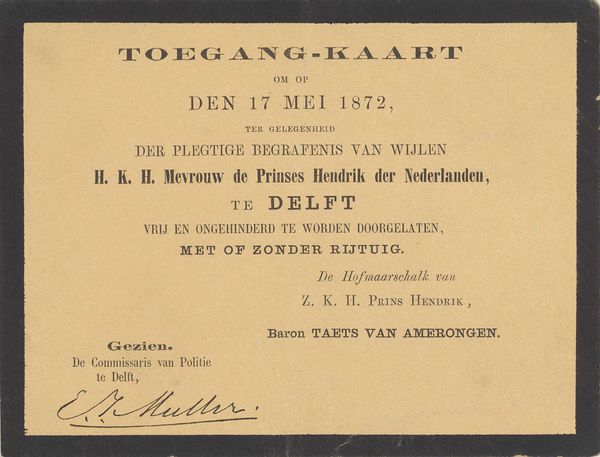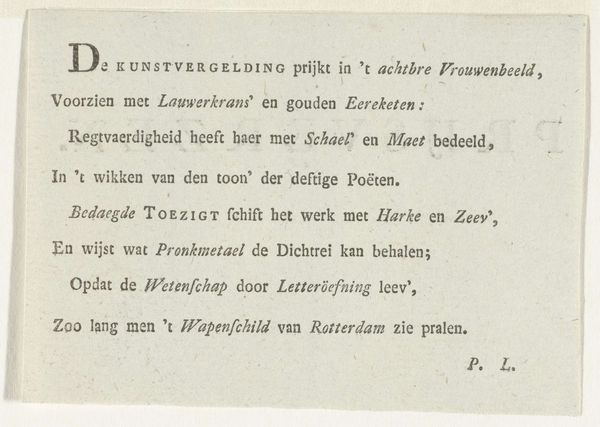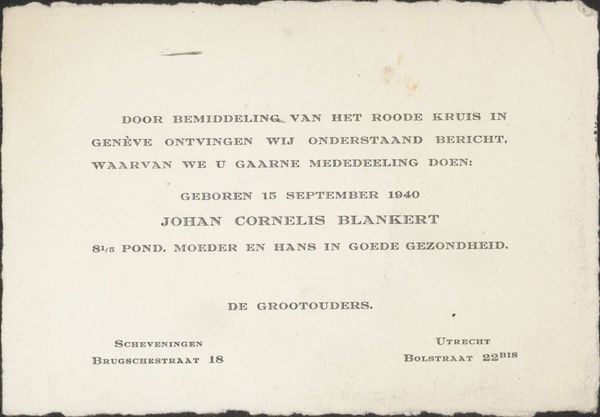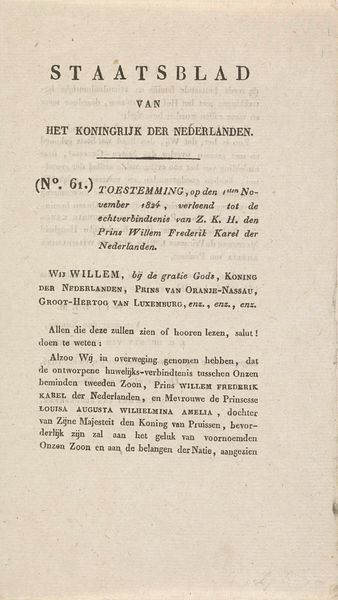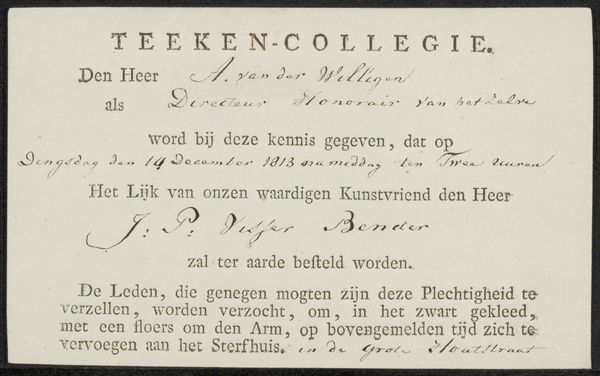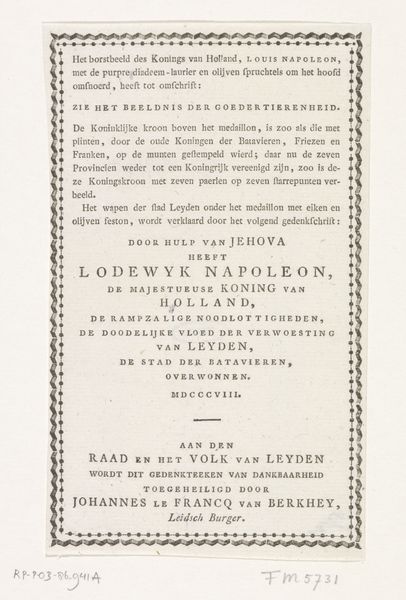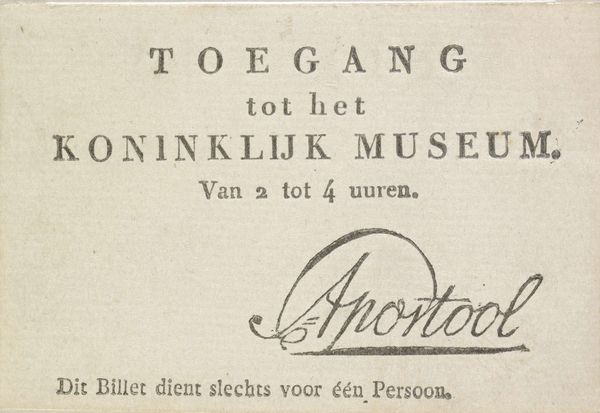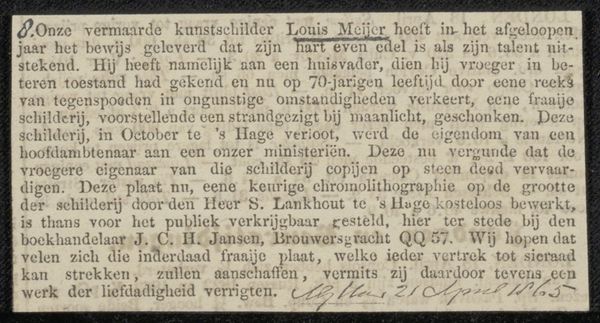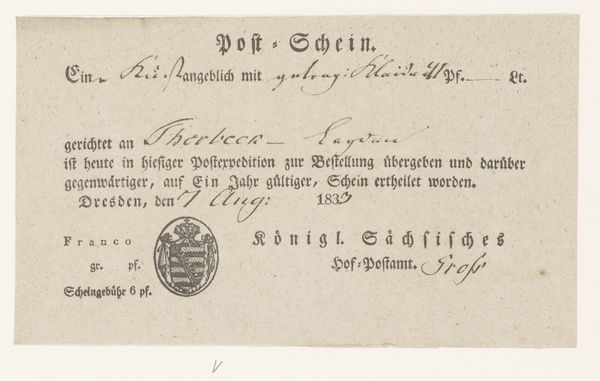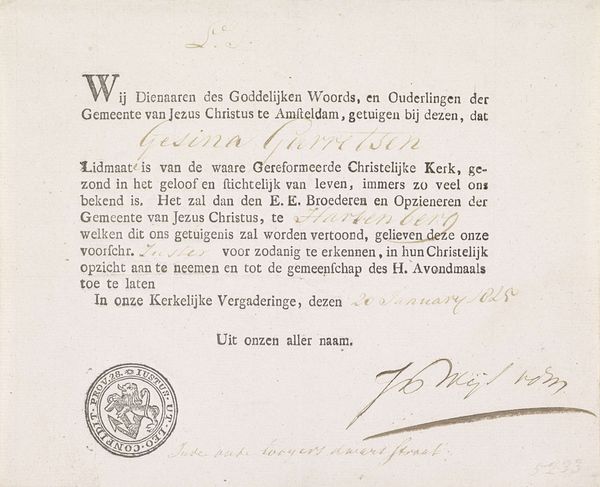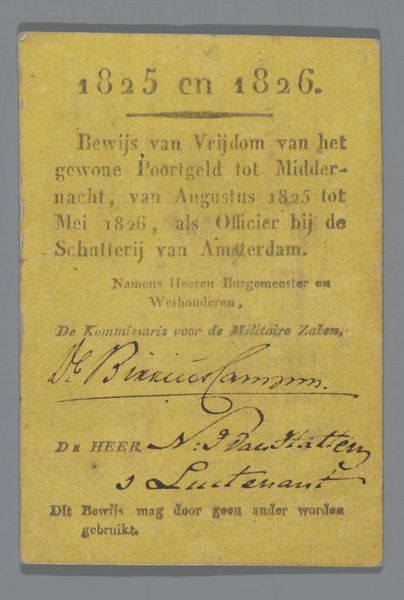
print, paper, typography
#
portrait
#
neoclacissism
# print
#
paper
#
typography
Dimensions: height 115 mm, width 148 mm
Copyright: Rijks Museum: Open Domain
Editor: So, this unassuming piece is actually an admission ticket for the funeral of King Willem II in 1849. It’s made from paper and typography. There’s something so stark about it, so matter-of-fact. What’s your take on this peculiar artifact? Curator: Well, consider the means of production. This wasn't some unique, handcrafted item. Typography implies mass production, a deliberate attempt to control and disseminate information about the monarchy, even in death. What does this suggest about the evolving relationship between the ruler and the ruled? Editor: I see your point! It's not a painting intended to glorify the king; it is, indeed, designed to facilitate attendance at his funeral. A practical artifact. Curator: Precisely! And consider the social context. Paper was becoming more readily available, but access to events, even funerals, still had its hierarchies. This little scrap provides tangible insight into material constraints and access within Dutch society in the mid-19th century. What can the signature on the ticket tells us? Editor: I notice it's signed by the 'Burgemeester, Commissaris van den Koninklijken Grafkelder, Metelerkamp'. This speaks of the administrative structures involved even in death. Curator: Yes! The involvement of civic authorities reveals a bureaucratic element often overlooked in narratives of royalty and loss. So it brings our focus to social hierarchies, resource allocation, and state power embedded within everyday materials and documents. Editor: That's so interesting; I was stuck on the somber nature of the event itself but you've really broadened the view. Thanks! Curator: Indeed. By exploring this print, we are delving into a broader historical narrative by unpacking the paper, ink and typographical decisions to give voices from the past, and reconsider assumptions we have around mourning rituals of statehood.
Comments
No comments
Be the first to comment and join the conversation on the ultimate creative platform.

